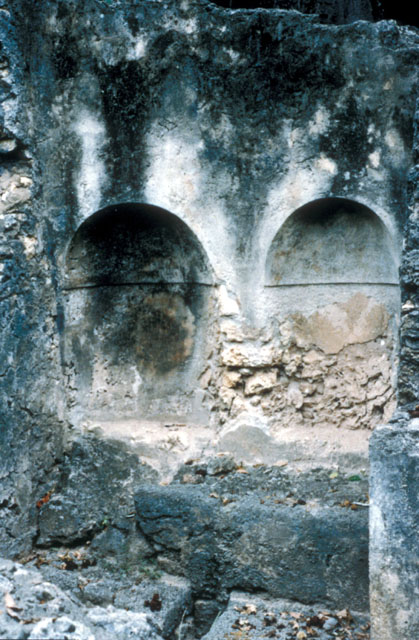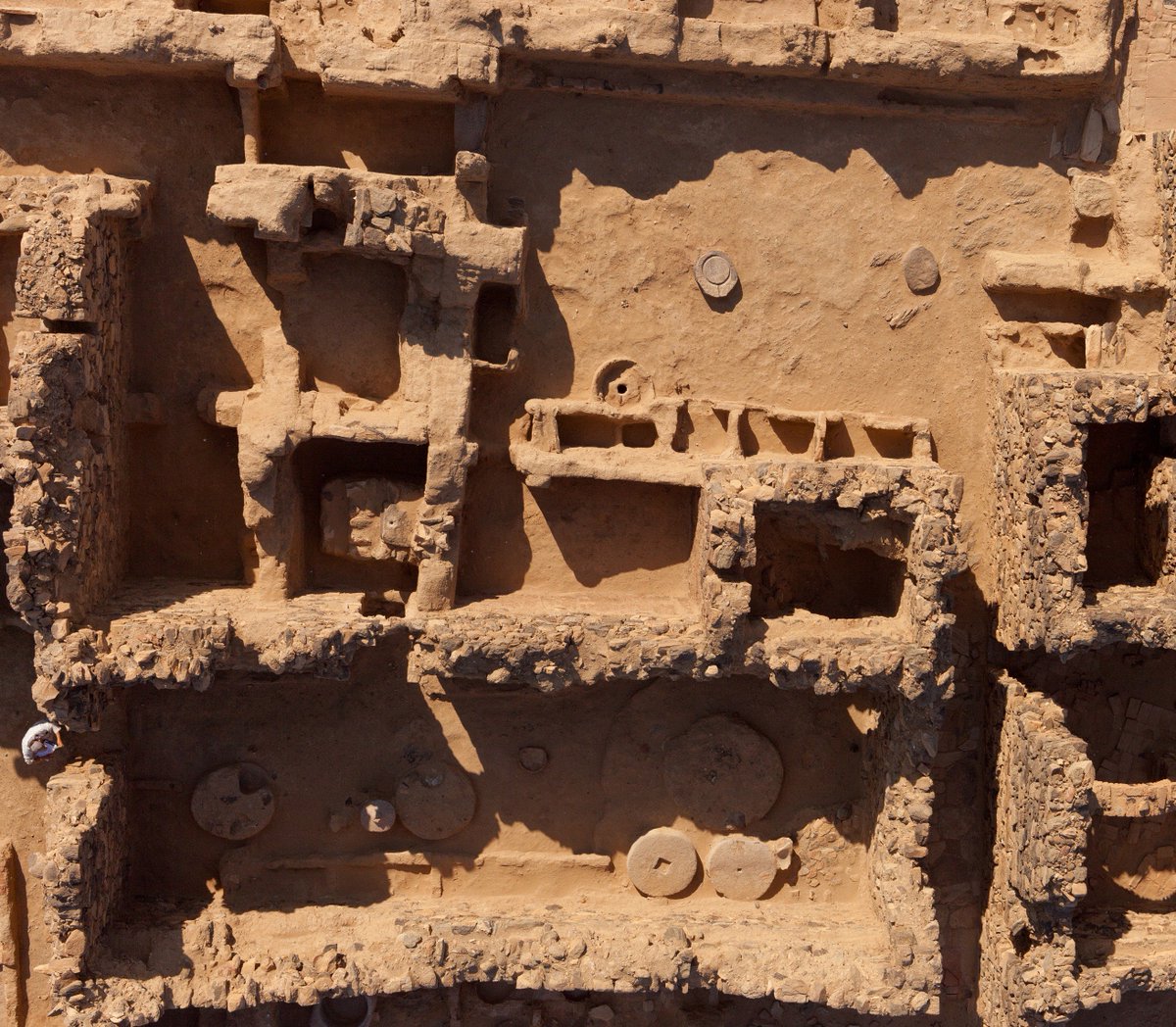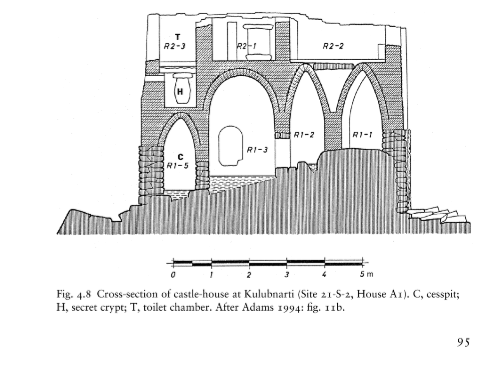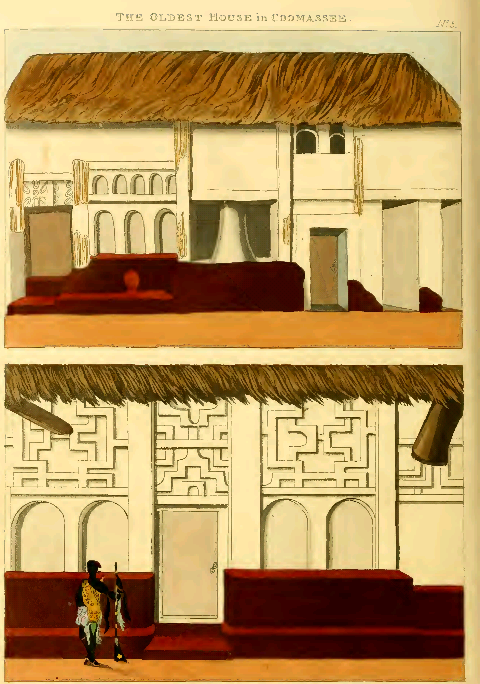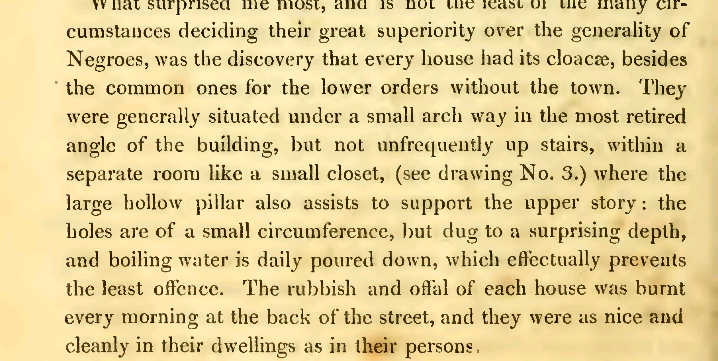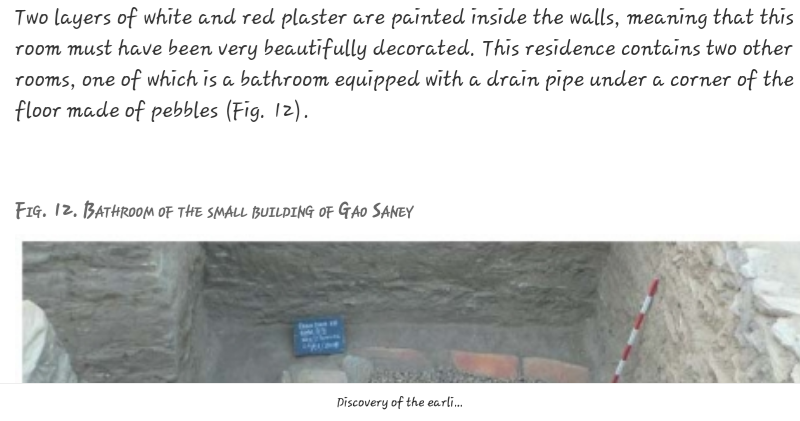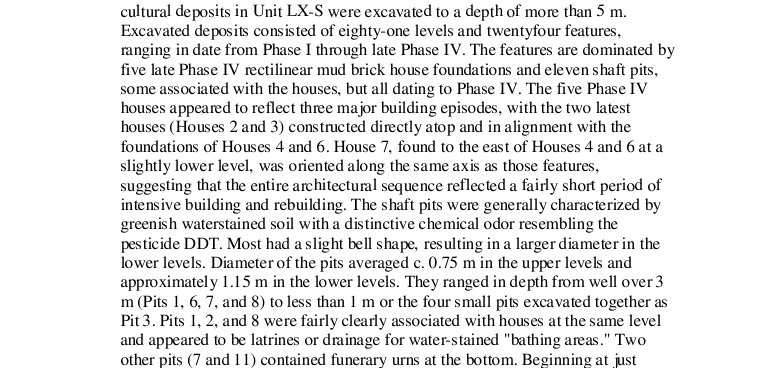For #WorldToiletDay
A thread on medieval and early modern African lavatories/baths/latrines
#triviaxt
#historyxt
The baths and toilets of Gedi (Inset),shanga and cities of medieval swahili (1000-1500AD) -Kenya, Tz
A common feature of a swahili house, the bath and toilet were
A thread on medieval and early modern African lavatories/baths/latrines
#triviaxt
#historyxt
The baths and toilets of Gedi (Inset),shanga and cities of medieval swahili (1000-1500AD) -Kenya, Tz
A common feature of a swahili house, the bath and toilet were
built in coral stone, with a raised platform and niches for water pots for the bath and a square platform with niches built over a cesspit 4-8m deep and an adjacent washbasin for cleaning
Found at Shanga (virtually all 54 houses Horton excavated),kilwa, kisimani mafia, takwa etc
Found at Shanga (virtually all 54 houses Horton excavated),kilwa, kisimani mafia, takwa etc
Read under the Chapter: "swahili houses" by Thomas Gensheimer in "The swahili world" by Stephanie wynne-jonnes
Read starting with Pg 58 of
Shanga: The Archaeology of a Muslim Trading Community on the Coast of East Africa
Mark Chatwin Horton, Helen W. Brown, Nina Mudida
Read starting with Pg 58 of
Shanga: The Archaeology of a Muslim Trading Community on the Coast of East Africa
Mark Chatwin Horton, Helen W. Brown, Nina Mudida
Makuria, alodia
christian nubia toilets and baths (550-1350AD)
Often located on top floor with paved, heated floors, decorated walls supplied with hot piped water
fired clay seats with drain basin for flush water discharging
Inset: ghazali & kulbnarti toilets & sewerage system
christian nubia toilets and baths (550-1350AD)
Often located on top floor with paved, heated floors, decorated walls supplied with hot piped water
fired clay seats with drain basin for flush water discharging
Inset: ghazali & kulbnarti toilets & sewerage system
through ceramic pipe into a vaulted cesspit belowground
The house's toilets were lined up on either side away from main streets
Common in kulbnarti (inset) dongola (capital of Makuria), meinarti, soba (capital of aodia) monasteries like ghazali both for elites and commoners
The house's toilets were lined up on either side away from main streets
Common in kulbnarti (inset) dongola (capital of Makuria), meinarti, soba (capital of aodia) monasteries like ghazali both for elites and commoners
See pg 171 of
The Medieval Kingdoms of Nubia: Pagans, Christians and Muslims Along the Middle Nile
Derek A. Welsby
The Medieval Kingdoms of Nubia: Pagans, Christians and Muslims Along the Middle Nile
Derek A. Welsby
Toilets of Kumasi and asante empire cities (18th-19th century)
Often found on top floor (elites) and outdoor (commoners)
They were separate rooms built with fired clay and wood, flushed with boiling water; discharging sewage
Toilet room's windows ( top right corner of house)
Often found on top floor (elites) and outdoor (commoners)
They were separate rooms built with fired clay and wood, flushed with boiling water; discharging sewage
Toilet room's windows ( top right corner of house)
Sewage through a pipe at the back of the house into a deep pit underground
The above house is Thomas Bowditch's illustration
The two windows on the top right are for the toilet room, he was in kumasi in the early 19th cent.
Here's a snippet of his description of kumasi toilets
The above house is Thomas Bowditch's illustration
The two windows on the top right are for the toilet room, he was in kumasi in the early 19th cent.
Here's a snippet of his description of kumasi toilets
See pg 306 in
Mission from Cape Coast Castle to Ashantee: With a Statistical Account of that Kingdom, and Geographical Notices of Other Parts of the Interior of Africa
By Thomas Edward Bowdich
Mission from Cape Coast Castle to Ashantee: With a Statistical Account of that Kingdom, and Geographical Notices of Other Parts of the Interior of Africa
By Thomas Edward Bowdich
Gao (9th-12th centh)
Bathrooms were built inside several houses excavated at the Old city
They were beautifully plastered, and had a drainage pipe connected to an outdoor pit
(Similar design to jenne, kumbi saleh, etc of which I don't hv pictures yet but will describe)
Bathrooms were built inside several houses excavated at the Old city
They were beautifully plastered, and had a drainage pipe connected to an outdoor pit
(Similar design to jenne, kumbi saleh, etc of which I don't hv pictures yet but will describe)
Read under:
Discovery of the earliest royal palace in Gao and its implications for the history of West Africa
Shoichiro Takezawa et Mamadou Cisse
Discovery of the earliest royal palace in Gao and its implications for the history of West Africa
Shoichiro Takezawa et Mamadou Cisse
Jenne-jenno (250BC-1400AD)
Found in several of the houses
the bath and/or latrine were found on the ground floor and through 3m long drainage/sewage channels were connected to 4.5m deep pits
Dated to phase vi (900-1400ad) associated with the resurgence of Ghana and rise of mali
Found in several of the houses
the bath and/or latrine were found on the ground floor and through 3m long drainage/sewage channels were connected to 4.5m deep pits
Dated to phase vi (900-1400ad) associated with the resurgence of Ghana and rise of mali
Taken from:
Excavations at Jenne-Jeno, Hambarketolo, and Kaniana (Inland Niger Delta, Mali): the 1981 Season
McIntosh, Susan Keech
Excavations at Jenne-Jeno, Hambarketolo, and Kaniana (Inland Niger Delta, Mali): the 1981 Season
McIntosh, Susan Keech
Toilets of Kumbi saleh, tegdaust and the cities of the Ghana empire (8th-13th cent)
The latrines were located on the lower floors built with drystone with paved floors and small rectangular holes in slab built over deep cesspools
(translation of bethier's excavations at kumbi)
The latrines were located on the lower floors built with drystone with paved floors and small rectangular holes in slab built over deep cesspools
(translation of bethier's excavations at kumbi)
Taken from;
Recherches Archéologiques Sur la Capitale de L'empire de Ghana: Étude D'un Secteur D'habitat À Koumbi Saleh, Mauritanie : Campagnes II-III-IV-V, (1975-1976)-(1980-1981)
Sophie Berthier
She has an entire section on kumbi saleh's latrines
Recherches Archéologiques Sur la Capitale de L'empire de Ghana: Étude D'un Secteur D'habitat À Koumbi Saleh, Mauritanie : Campagnes II-III-IV-V, (1975-1976)-(1980-1981)
Sophie Berthier
She has an entire section on kumbi saleh's latrines
Adding this correction for ghazali toilets to the thread https://mobile.twitter.com/arturobluski/status/1329370842212478976

 Read on Twitter
Read on Twitter